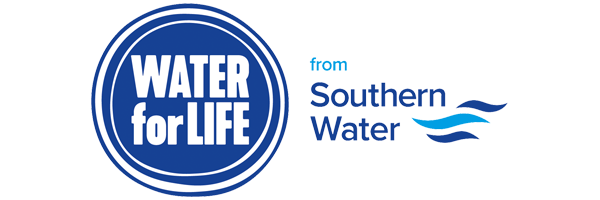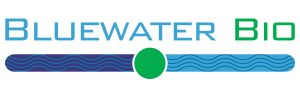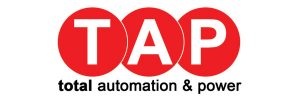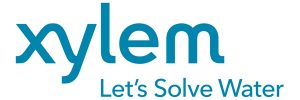Lingfield WwTW (2024)
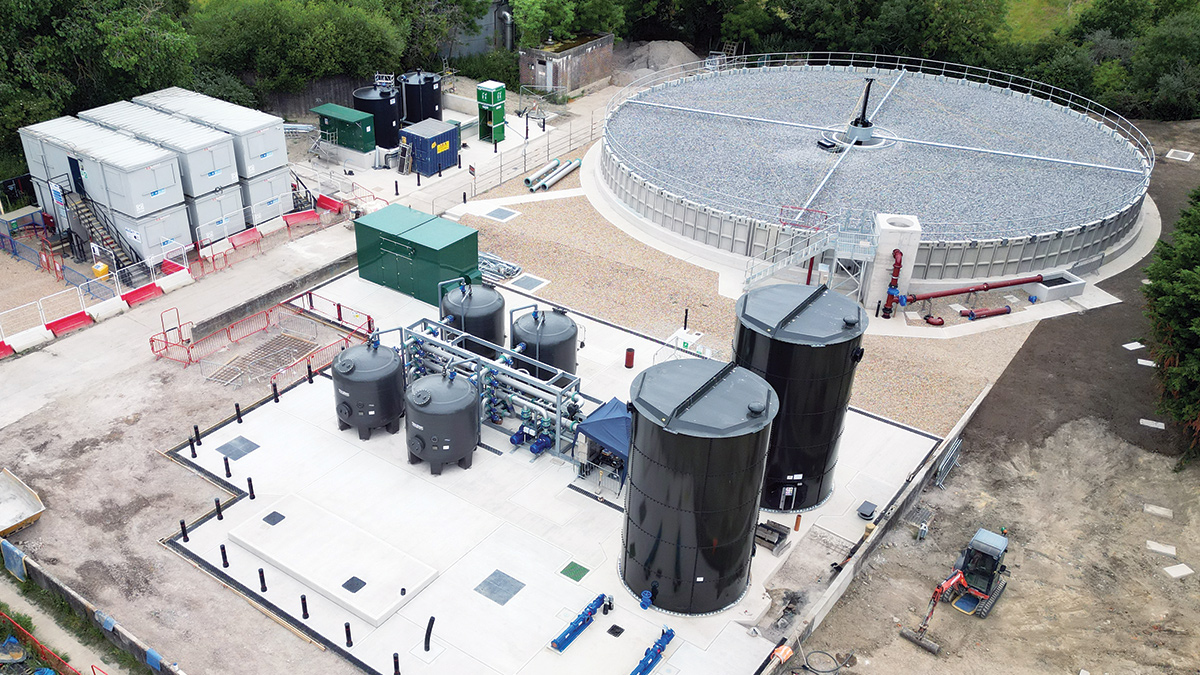
New assets at Lingfield WwTW include backwash tanks, tertiary treatment plant, a biological trickling filter and chemical dosing facilities - Courtesy of CMDP
Southern Water’s Lingfield Wastewater Treatment Works (WwTW) is located approximately 2km north of Lingfield Park Racecourse in Surrey and serves the population of Lingfield and surrounding villages. An upgrade project is currently taking place which, once complete, will improve the quality of treated water going back to the environment and make sure Southern Water can meet the new environmental standards set out by the Environment Agency in the Water Industry National Environment Programme (WINEP3). The project started on site in August 2023 and the main works are due to be complete in December 2024.
Project drivers
The Lingfield upgrade was required to fulfill the following drivers:
- WINEP – P removal (regulatory date 22 December 2024): Lingfield WwTW is already required to achieve P removal, but a more stringent permit will be introduced at the site this AMP. New assets are required to meet the revised permit conditions (phosphorus standard of 0.3mg/l (mean), Fe: 4mg/l (95%) 8mg/l (U/T)) as identified in the Water Framework Directive (WFD) IMPg-P driver in the Water Industry National Environment Programme (WINEP3).
- U_iMP5 Programme – increased flows (regulatory date 31 March 2025): As well as the Water Framework Directive quality driver, a further project driver is to implement improvements at the site to facilitate an increase of the full flow to treatment (FFT) from 83 l/s to 127 l/s. This will involve the installation of new process assets to provide additional biological treatment capacity and accommodate projected population growth to the design horizon of 2035. The projected population equivalent (PE) at the design horizon is 13,390.
Project scope
This work is being undertaken by CMDP, a joint venture between Costain and MWH Treatment. As one of Southern Water’s Delivery Partners for its AMP6 and AMP7 Capital Investment programmes, CMDP is delivering a range of schemes to maintain and improve Southern Water’s water supply and waste water treatment works, including Lingfield WwTW.
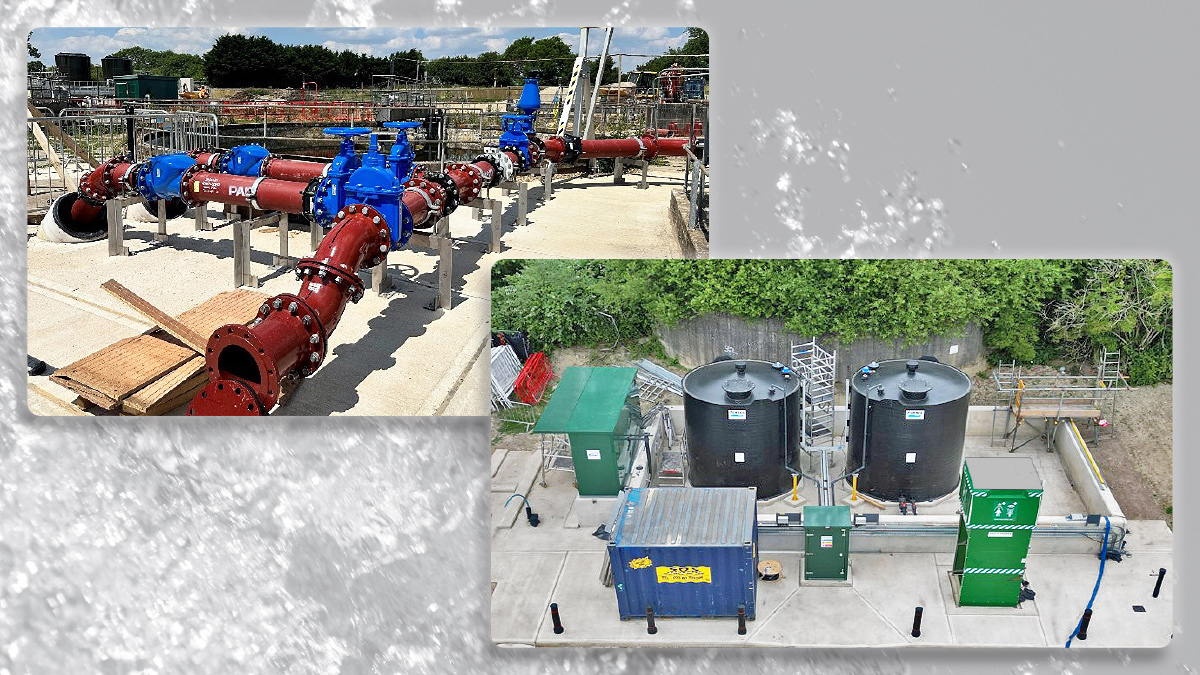
(left) New trickling filter pumping station pipework and (right) chemical dosing facilities – Courtesy of CMDP
P removal: The main components of scope to address the P removal driver are as follows:
- Upgrade the existing 30m3 ferric dosing facilities to incorporate a second dosing location:
- Point of Application 1 for ferric is as existing at the end of inlet flume.
- Point of Application 2 for ferric will be into a static mixer on the new tertiary treatment feed pipework.
- New 40m3 sodium hydroxide dosing facility with a single point of application at the settled sewage pumping station (upstream of the biological treatment stage).
- New tertiary treatment plant (TTP) comprising a Bluewater Bio Ltd FilterClear package.
- Make the existing moving bed filters redundant.
- Convert the existing sand filter pumping station (PS) into TTP Feed PS (sized to accommodate new peak flow through works).
- New low voltage assembly and control panel to serve the above.
U_IMP5: The main components of scope to address the U-IMP5 driver are as follows:
- Replace crude sewage pumps with larger capacity units and modify pipework and access to accommodate and enable certification of inlet flow meters at FFT.
- New 12.5m diameter radial humus settlement tank with half bridge scraper.
- Replace final effluent/outfall pumps with larger capacity units.
- New biological trickling filter feed pumping station.
- New 31m diameter biological trickling filter with a working volume 1377m3.
- Cross-site pipework to integrate the new filter into the existing treatment works.
Other works: In addition to the above, the following site-wide improvements form part of the project:
- Upgrade the site power supply.
- Upgrade site telemetry system.
- Replace the existing standby generator with a larger capacity unit.
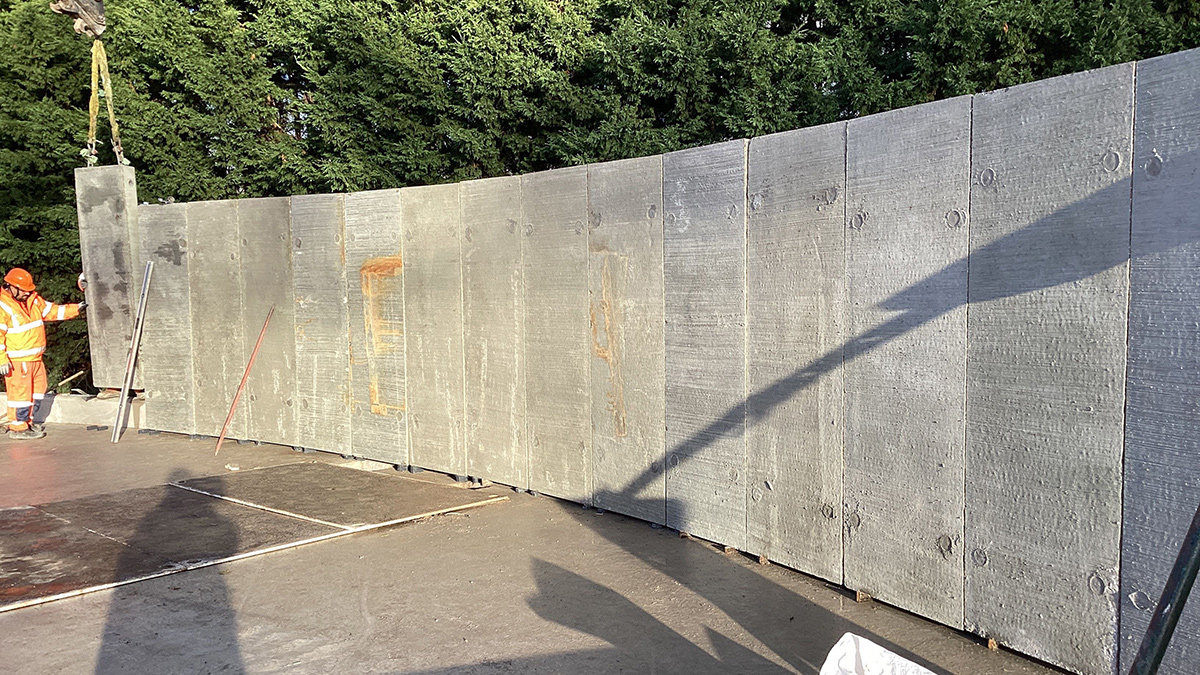
Trickling filter tank precast panel installation – Courtesy of CMDP
Lingfield WwTW: Supply chain – key participants
- Client: Southern Water
- Delivery contractor: CMDP
- Civils engineering works: Coleman Utilities & Construction
- FilterClear tertiary treatment plant: Bluewater Bio Ltd
- Trickling filter bed construction: Day Contracting
- Mechanical contractor: Pipe Systems Ltd
- Electrical contractor: Field Systems Design
- LVA/systems integration: TAP – Total Automation & Power
- Chemical dosing (ferric): Lintott Control Systems
- Chemical dosing (caustic): Bridges Electrical Engineers Ltd
- Humus tank & filter arms: Tuke & Bell
- Filter media: Day Aggregates
- Scraper bridge: Jacopa
- Flow meters: Siemens
- Pumps: Xylem Water Solutions
- Generators: P&I Generators Ltd
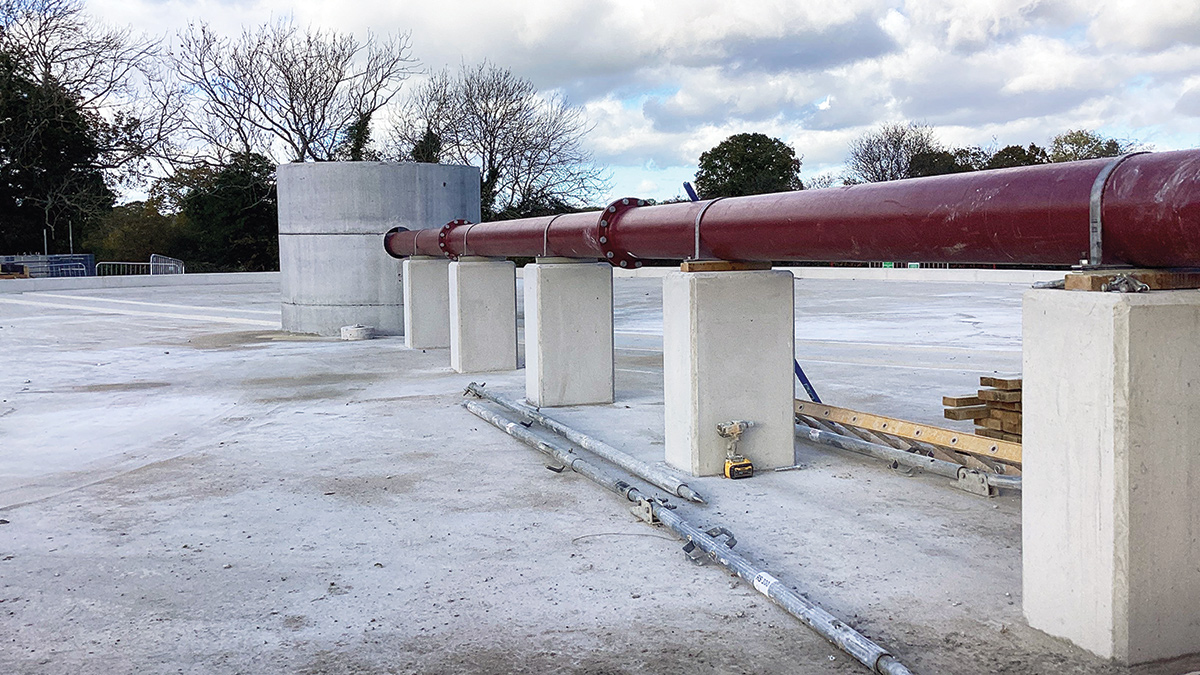
Trickling filter pipework – Courtesy of CMDP
New biological trickling filter bed and feed pumping station
Part of the project is to install a new 31m biological trickling filter to supplement the existing secondary treatment capacity at the site. Space limitations at the site necessitated re-development of an area previous occupied by sludge storage bays. The existing structure was broken out only where required, with the aim of minimising the volume of waste generated for off-site disposal.
The filter construction comprised reinforced concrete base slab and precast wall sections/tiles, blast furnace slag media, new motor driven distribution arms, and inlet and outlet pipework. Also required is the installation of a new feed pumping station, consisting of a new wet well, duty/standby variable speed pumps and the associated pipework, including a cross site rising main to the new filter.
New humus tank
A new below-ground 15m radial humus tank has been installed as part of the upgrade. The tank is 7m at its deepest point i.e. the central sludge hopper and is fitted with a conventional half-bridge rotating scraper.
Construction of the tank was significantly constrained due to the close proximity of existing assets and size of the site, as well as the enormity of buried services in this area, meaning a traditional rectangle cofferdam was not viable. Therefore, a circular pre-driven sheet with an external ring beam was designed to utilise the available space on site and overcome the multiple constraints.
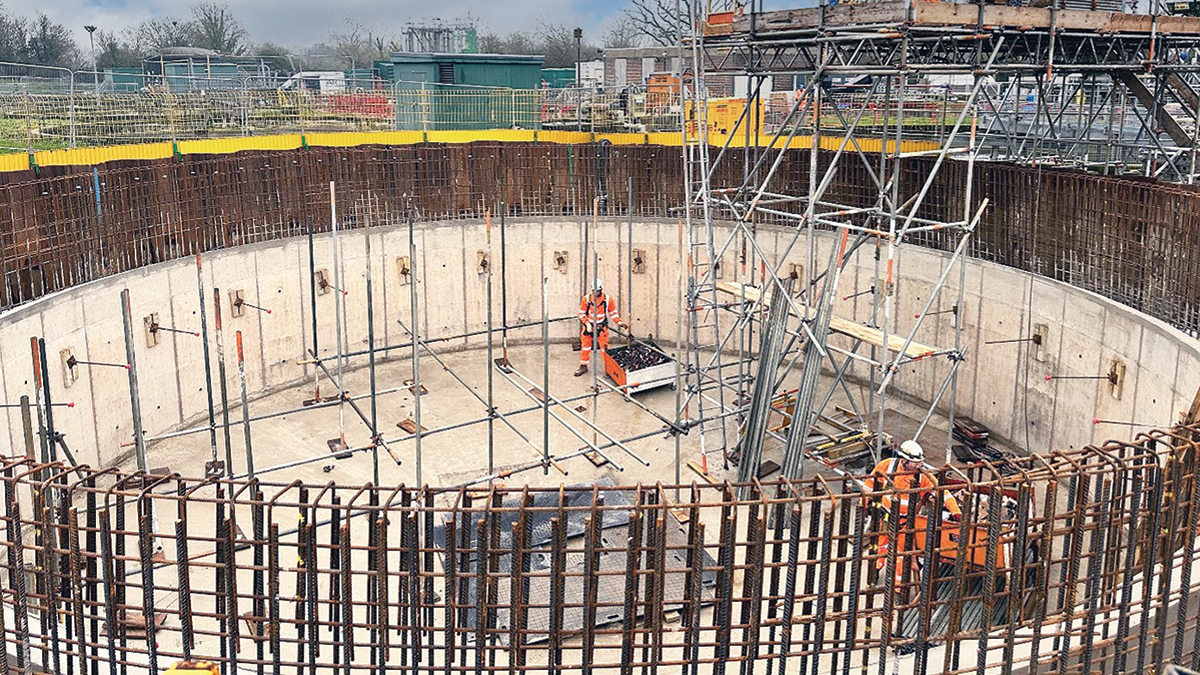
New Humus tank construction and temporary works access – Courtesy of CMDP
Tertiary treatment plant
A new tertiary treatment media filter plant was supplied by BlueWater Bio Ltd and included four multimedia filter cells, backwash and sludge transfer pumps, clean and dirty backwash tanks, and interconnecting pipework.
As mentioned previously, in relation to the trickling filter, the new tertiary plant was located in an area previously occupied by sludge storage bays to make best use of available land within the existing site boundary.
The existing electrical distribution system at Lingfield WwTW requires upgrading to incorporate the new and retained process loads. The existing system consists of a main distribution board housed within the main control building and fed from a 315kVA 11kV/433V transformer. The existing main distribution board will be retained and back fed from a new main LV assembly switchboard LVA1 to increase the capacity of the site.
Challenges
One of the main challenges facing the site team at Lingfield was the considerable number of previously unidentified services in the area where construction was required.
There were approximately 140 services which needed to be found and avoided, and this unexpected challenge was overcome by the diligence and professionalism of the site team, who utilised Cable Avoidance Tools (CATs) and Signal Generators (Gennys) and Vac EX as well as multiple trial holes. There have been and estimated 45 permits to dig raised in order to safely establish the whereabouts of these buried services.
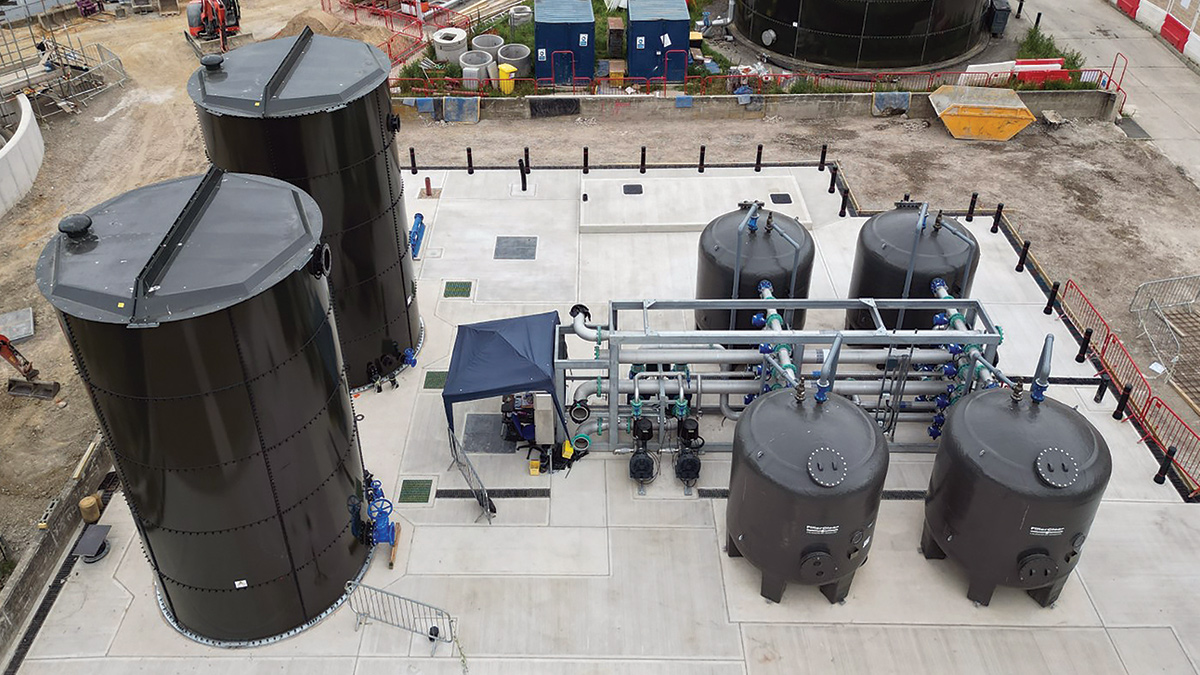
Clean and dirty backwash tanks and the FilterClear tertiary package plant – Courtesy of CMDP
Another key challenge faced by the team at Lingfield was posed by the lack of space available on site. To overcome this challenge, the team utilised the expertise of CMDP parent company Costain in the design a circular retaining wall for the new humus tank.
The site itself is also on a flood plain and due to the increased rainfall and weather conditions earlier in the year the site was in fact flooded and needed to be pumped out to allow works to continue. In addition, this site only has one access road in and out therefore meaning careful planning of deliveries and visits is required to minimise any traffic issues being raised.
The challenges themselves became somewhat of a success for the team and can be used as a benchmark for overcoming similar constraints in future projects.
Social value
Social value is an important part of all projects, and both Southern Water and CMDP maintain a commitment to improve the communities in which they operate. The aim is to capture the most relevant information of how communities are impacted and the social value portal’s Themes, Outcomes and Measures (TOM) system was used to measure and report on the worth of the social value activities undertaken by both the project team and CMDP as a whole.
Southern Water and CMDP’s aspiration is to act beneficially and integrate into community life by contributing to environmental improvements and deterring any negative impact, using a local workforce and encouraging individuals into work while maintaining a high level of wellbeing for staff and visitors.
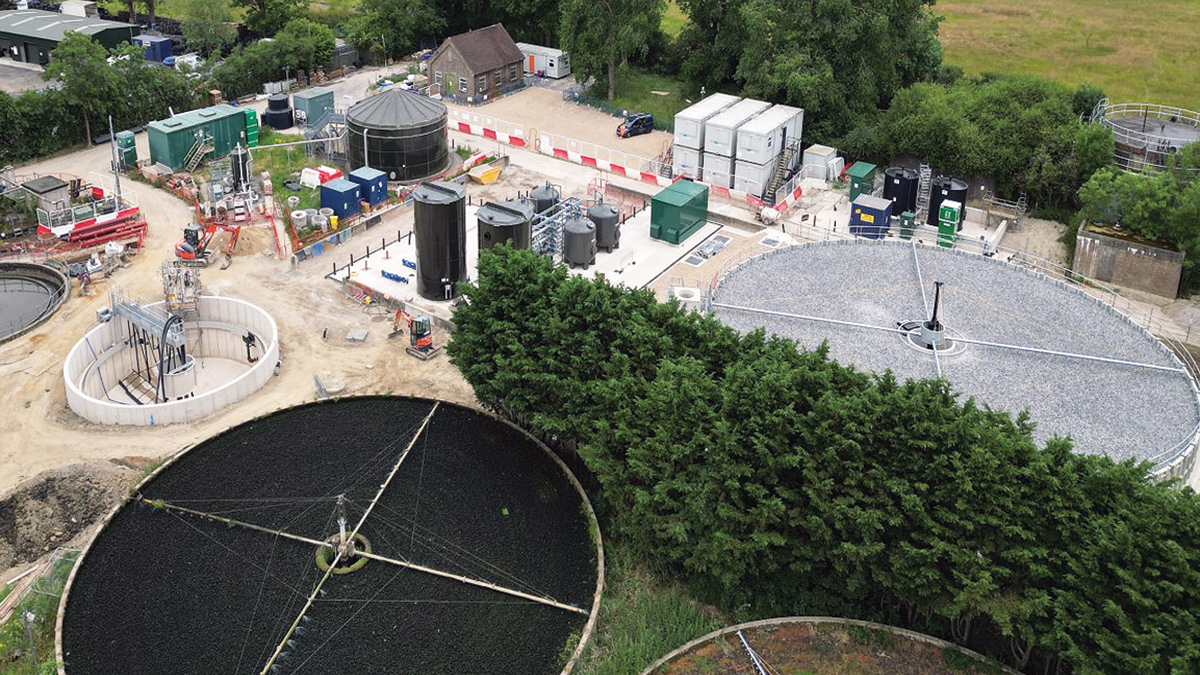
Lingfield WwTW – Courtesy of CMDP
It is important to establish meaningful opportunities for volunteering and donating which can leave a lasting legacy when work is complete and the site team has moved on. Fundamentally, Southern Water and CMPD want to ensure that each site has a robust communications plan which can include a social value tracker where actions can be measured and their impact quantified.
The area in which the works are being conducted has little residential impact due to the location of the site, however the following areas were identified in which positive impact could be made:
- Supporting the community by, where possible, employing local people to join the team and make a positive impact.
- As part of our commitment to positive change in construction, CMDP have registered with the Considerate Constructors Scheme and achieved a score of 45 out of 45 for the site’s most recent assessment visit earlier this year. The assessor noted that due to the isolated location of the works, and its location in the countryside, the team have the responsibility to make sure there is no detrimental effect on or caused to the area, which they advised the team clearly demonstrated.
- Bats were nesting/roosting behind the site cabins and to minimise the noise impact and any disturbance to the bats, acoustic barriers were installed.
- Project engineer (Xenia Magdaleno-Tseng) is registered as a STEM ambassador and has judged a local school engineering competition. The STEM Ambassador Programme is an important part of CMDP’s work to inspire the next generation into the industry and capture interest. Where there currently is a skills gap, the need to be inclusive and promote not only the water sector but construction as a whole drives CMDP to enter into volunteering opportunities and learning goals for students within the local community and adjoining areas.
- The CMDP project engineer has won an award within the parent company of Costain, which recognises staff that live the core values and behaviours of the business; a difficult award to win due to the competition involved, but this highlights the dedication and commitment of the Lingfield WwTW project team.
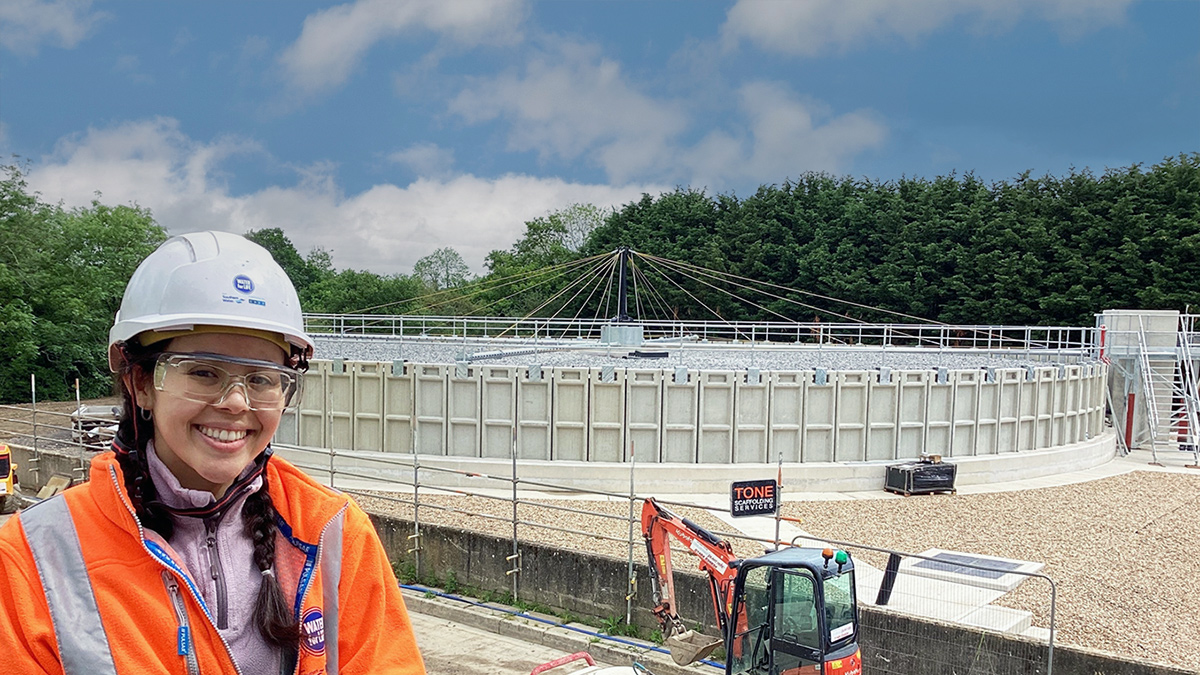
Project Engineer Xenia Magdaleno-Tseng in front of the new trickling filter bed – Courtesy of CMDP
There is also an aim, in collaboration with CMDP’s Environmental Manager, to install bat boxes upon completion of the works which will aid local natural habitats and act as an environmental enhancement. The Lingfield WwTW site team continue to seek further opportunities to contribute to the ecological maintenance of the area, such as litter picking the site. The wider team at CMDP also scope the areas further afield (due to the isolated nature of this site) to maximise engagement with schools and local charities.
Conclusion
At the time of writing (August 2024), the Lingfield WwTW upgrade goes from strength to strength, meeting milestones and continuing to have minimal impact on the surrounding area and community. The project has overcome a variety of challenges through thoughtful design and on-site innovation and is on schedule to achieve completion within the regulatory programme dates.
In accordance with our commitment to reduce carbon footprint, suppliers have been sought where possible from within a 20-mile radius of the site. The site team has also used local amenities and services throughout the duration of the project which should have a positive impact not only through engagement but also the financial injection into the community.
With the civil construction stage almost complete, work is currently being undertaken on the Humus de-sludge chamber construction and continuation of site wide ducting installation. Mechanical installation work is ongoing, with a sodium hydroxide dosing kiosk access platform to be installed with tertiary area and final effluent pumping station pipework to be completed. Electrical installation is ongoing with cable glanding continuing for the new LVA panels and the tertiary treatment area. This will be the final part of the construction phase.
The project benefits from continued collaboration of the Southern Water and CMDP teams. In addition to virtual communications, the teams have regular face to face meetings to discuss the project and make any improvements required; benefiting not only the current works but the legacy which is left for local customers.
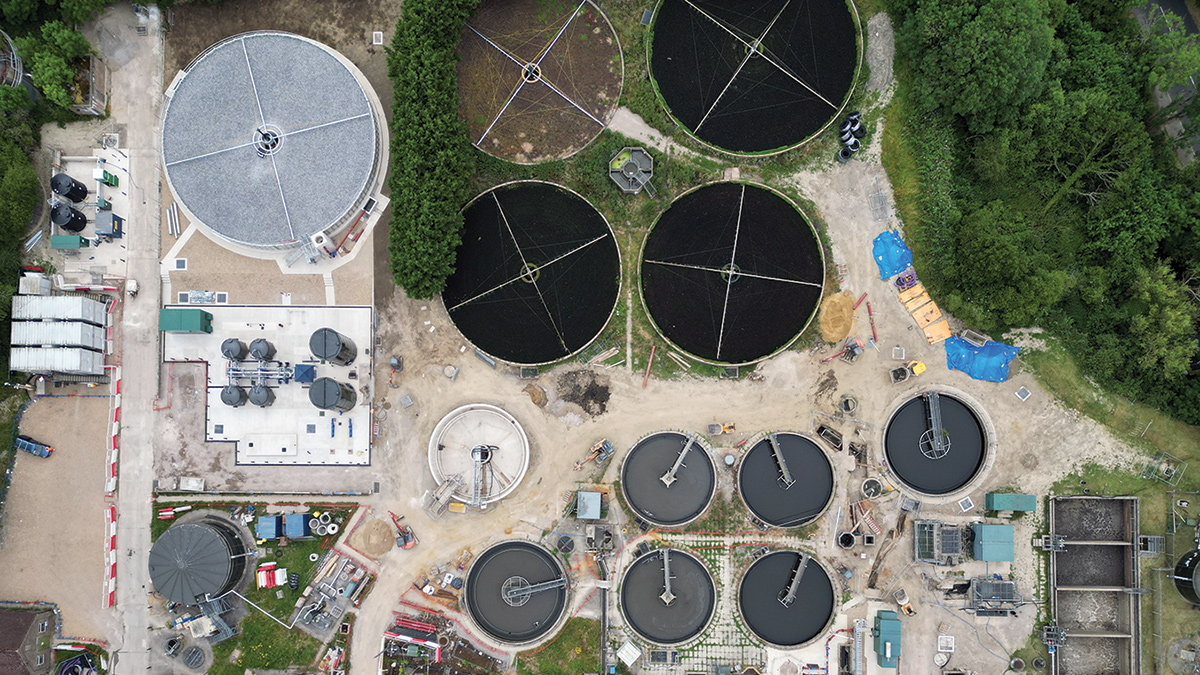
Lingfield WwTW - Courtesy of CMDP


